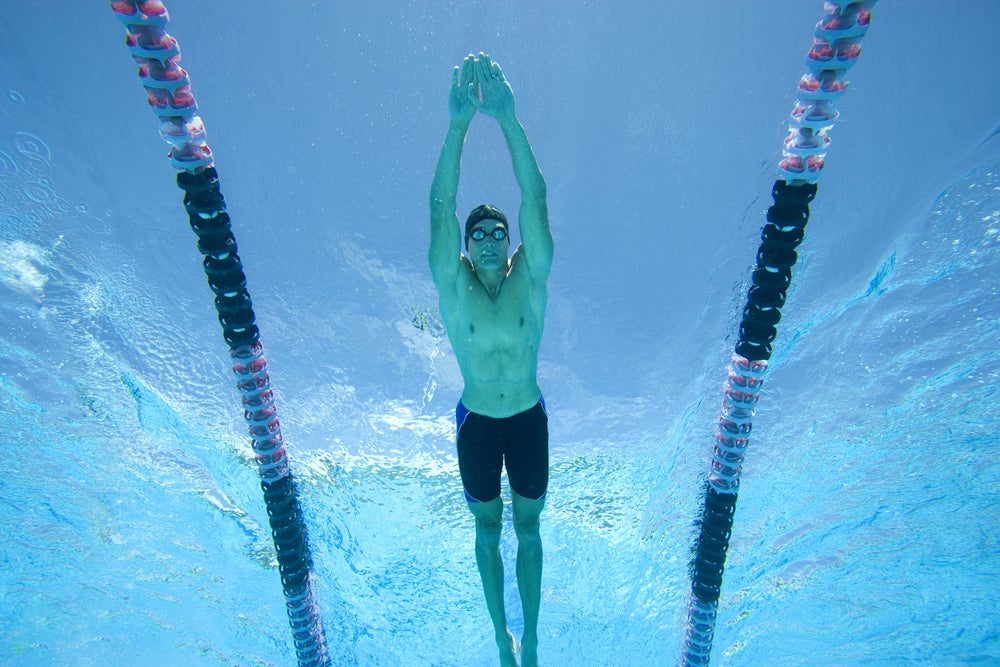Ask Coach Sara: Best Exercises For Shoulder Strength

Photo: <a href=http://shutterstock.com>Shutterstock.com</a>
Your questions about swimming as a triathlete, answered by coach and professional triathlete Sara McLarty.
Q: What are the best exercises to strengthen shoulders for swimming?–@AllenDavidov
A: First, let’s reconsider what muscles we want to strengthen for swimming. While our arms appear to be doing a majority of the work, we are engaging some of our large core muscles to produce the power: pecs, lats, deltoids, triceps and abs.
When we consider good exercises for the shoulders, our main focus should be on preventing overuse injuries. The repetitive motion of swimming often causes inflammation of the tendons and rotator cuff pain. Proper technique is the first step to prevent injuries, followed by a regular routine of strength exercises, such as stretch cord/band work, small dumbbell exercises (reverse fly, overhead shoulder press) and body-weight exercises (planks).
RELATED: Shoulder Exercises For A Stronger Swim
Q: Is there any benefit to training in a swimsuit (e.g., swim trunks) with more drag? –@GeekByExample
A: Drag suits were a common sight on the pool deck in the ’90s when many swim teams would wear some form: a mesh oversuit, T-shirts, tights or layering additional suits. The idea behind any drag suit is that an added resistance during training will cause an increase in strength, resulting in faster swimming when the drag suit is removed. However, the current trend among elite swimmers is a move away from the drag suit because they tend to cause a change in stroke mechanics. The additional material around the hips causes them to ride lower in the water and more stress is applied to the shoulders and upper body, which can result in overuse and mechanical injuries. I would not encourage triathletes to use a drag suit but instead to focus on creating an efficient and strong technique during training. With limited hours for swim training, it is important to make each lap of the pool effective.
RELATED – Review: Blueseventy Core Shorts
Q: What should I do about a rotator cuff injury? What are the typical swim causes? –@dobbyduvet
A: Rotator cuff injuries usually occur from an over-use movement or accident not related to swimming. Talk to your doctor about what you can do with your current injury. If you are given the green light to swim, observe what causes pain both in and out of the water. An incorrect catch and pull phase of the stroke might cause the smaller muscles in your shoulder and scapula to become over-worked. Other things to look at are a high arm entry (caused by not allowing the torso to rotate enough to assist in the set-up of the stroke), a slow and controlled recovery (good), or using paddles too often or that are too big.
RELATED: Prevent Or Remedy Shoulder Issues
Pro triathlete and swim coach Sara McLarty has 25-plus years of experience and knowledge about swimming mechanics, efficiency and technique